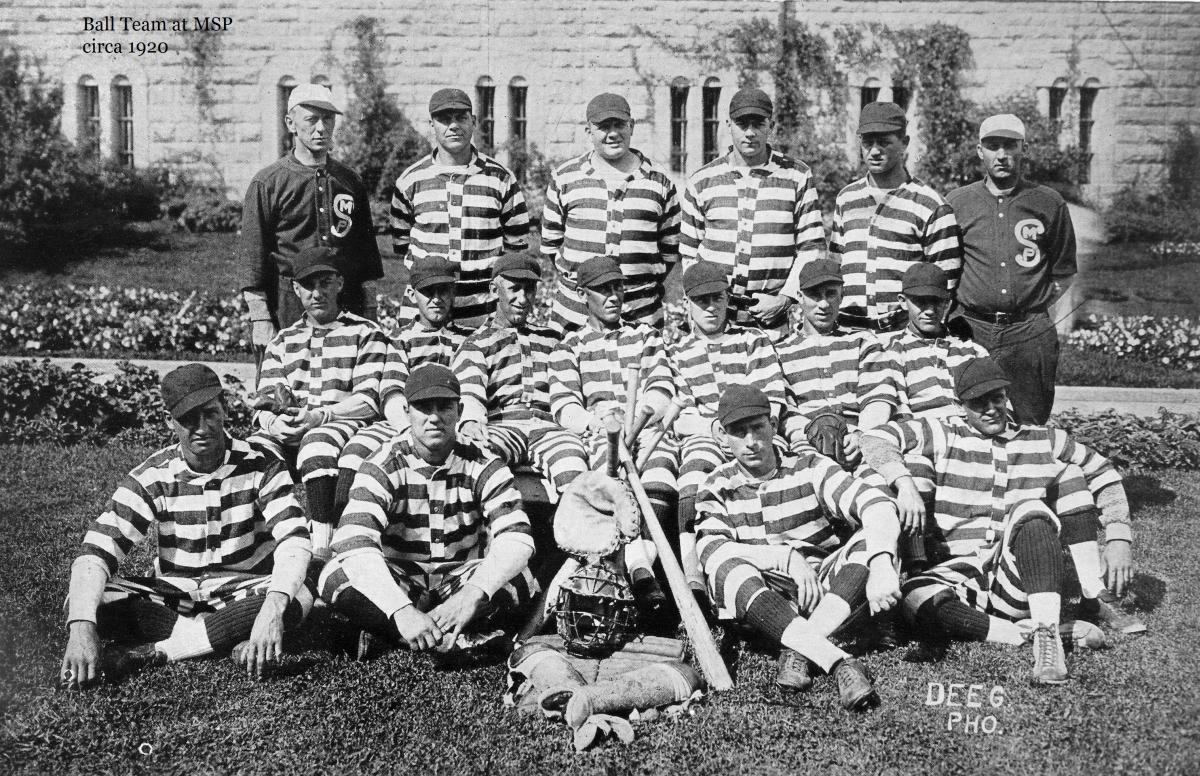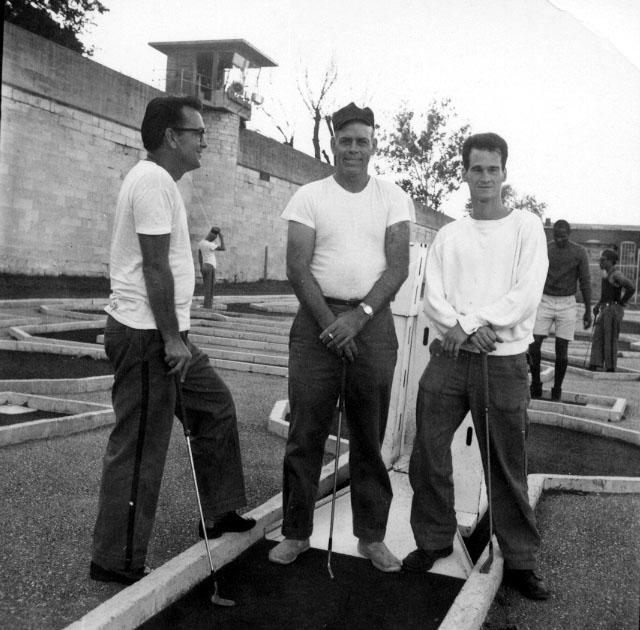Located in the lower lot of the Missouri State Penitentiary (MSP) sits an overgrown pavilion, overlooking a parking lot filled with the state vehicle fleet. Look closer, and you will see remnants of rusting gym equipment and a basketball court which, together with the pavilion that once served as the canteen, stand as remnants of recreational activities granted to inmates in a bygone era.
 Many Jefferson City residents hold memories of playing with Little League teams inside “Ozark Stadium,” the baseball field that once filled a large segment of MSP’s exercise yard. Decades before this tradition, MSP made history with the first recorded civilian-inmate sports match-up in November of 1924. At the time, the community was rarely invited inside the walls, especially to spectate or participate in activities. That year, however, Jefferson City brought together a team composed of former football stars from Missouri colleges to play against the Peaceful Village All-Stars, made up of MSP inmates. Although recreational privileges are now an established requirement for offenders, events came to pass that forced significant prison reform and led to the practices that are now entrenched in the correctional system.
Many Jefferson City residents hold memories of playing with Little League teams inside “Ozark Stadium,” the baseball field that once filled a large segment of MSP’s exercise yard. Decades before this tradition, MSP made history with the first recorded civilian-inmate sports match-up in November of 1924. At the time, the community was rarely invited inside the walls, especially to spectate or participate in activities. That year, however, Jefferson City brought together a team composed of former football stars from Missouri colleges to play against the Peaceful Village All-Stars, made up of MSP inmates. Although recreational privileges are now an established requirement for offenders, events came to pass that forced significant prison reform and led to the practices that are now entrenched in the correctional system.
The “Treatment Era” of criminal justice, which spanned 1945-1967, materialized in response to prison riots occurring regularly throughout the United States. Violence surged as complaints about food, treatment, and facilities poured into administration offices.
In February of 1945, Governor Phil Donnelly appointed Thomas Whitecotton as MSP Warden to “straighten that place up.” Warden Whitecotton worked to address prisoner privileges, discipline, and corruption within the penitentiary staff. Leading up to his appointment, a slump in population had occurred as convicts were paroled to join the service during World War II. A sudden rebound occurred in 1950, leading to overcrowding and further exacerbating issues inside the prison.
Morale was low amongst inmates and staff. The contract labor industry was being phased out, an activity that engaged the days of a multitude of MSP occupants. Moving primarily to state-owned shops that sold only to state agencies, MSP factories could employ no more than a few hundred of the thousands of inmates in various factories including the auto tag plant, metal plant, print shop, and the tobacco factory.
In addition to the job shortage, the previously established educational programs had stalled, now with inmates primarily tutoring each other and very limited vocational training. The lack of jobs and educational opportunities led to idle inmates and, combined with ever-increasing complaints of treatment, created a powder keg.
Riots occurred frequently in prisons throughout the country. The potential for a riot at MSP was so high that the topic was somewhat of a joke to local media. According to “Somewhere in Time” by former deputy warden Mark Schreiber, it was a common occurrence for the door to be thrown open in the communications room of the Missouri State Capitol as someone yelled “prison riot!” sending the room into fits of laughter. The Missouri State Highway Patrol, however, worked diligently on a plan and training for officers once the inevitable arrived.

Outbursts continued in the months following the September 1954 riot. In response, Governor Donnelly appointed a special committee to enact stark comprehensive prison reform in Missouri. This committee returned a report covering a wide range of issues, including administration, food, and the conditions of A-Hall.
Following the report, Elbert Nash became MSP warden, immediately declaring an emphasis on rehabilitation. He expressed the importance of job training to give inmates a marketable skill, stating, “We want them to be able to use their hands and minds in a way that is legal. Let’s not coddle them, but let’s treat each one of them like a man.”
Under Warden Nash’s watch, yard privileges were expanded, the license tag plant was rebuilt, and sporting events stepped into a larger spotlight. Boxing, wrestling, weightlifting, softball, and basketball created healthy competition between the inmates, both for fun and to dissipate conflict. Whenever a fight would break out among inmates, they were encouraged to settle their differences with a boxing match. In 1956, the yard time experience expanded as the first ice milk cone stand in a U.S. prison opened in the lower yard canteen.

The focus on rehabilitation spearheaded by Warden Nash carried on in the following decades of prison reform. The response to inmate unrest was to keep them busy, whether it be through education, vocation, or sports to resolve issues as they arose.
Missouri State Penitentiary
Decommissioned in 2004, the Missouri State Penitentiary was the oldest continually operating prison west of the Mississippi. The prison was 100 years old when Alcatraz began taking inmates…
